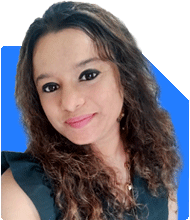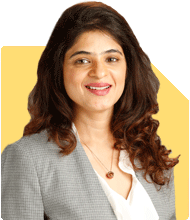42-Year-Old with Child - How to Achieve Retirement by 2031 with Existing Investments?
Ramalingam Kalirajan |8459 Answers |Ask -Follow
Mutual Funds, Financial Planning Expert - Answered on Jul 25, 2024
He has an MBA in finance from the University of Madras and is a certified financial planner.
He is the director and chief financial planner at Holistic Investment, a Chennai-based firm that offers financial planning and wealth management advice.... more

मैं 42 वर्ष का हूँ और मेरी एक 12 वर्ष की बच्ची है, मेरे पास 1.5 लाख मासिक आय वाला स्टार्टअप व्यवसाय है, लगभग 1 करोड़ की एफडी है जिसमें घर के खर्च के लिए 50 हजार मासिक आय है और पोस्टल एमआईएस में 20 लाख की एफडी है जिसमें 10 हजार मासिक आय है और पोस्टल एफडी से स्कूल फीस के प्रबंधन के लिए 1.2 लाख मिलते हैं, सुकन्या समृद्धि 20 हजार वार्षिक, कोई ऋण नहीं, घर के लिए योजना बना रहा हूँ और 2031 तक रिटायर हो जाऊंगा, कृपया मुझे रिटायरमेंट आय के बारे में मार्गदर्शन करें
वर्तमान वित्तीय स्थिति
आयु: 42 वर्ष
बच्चा: 12 वर्षीय लड़की
मासिक आय: स्टार्टअप व्यवसाय से 1.5 लाख रुपये
सावधि जमा (FD):
घर के खर्चों के लिए 50,000 रुपये मासिक आय के साथ 1 करोड़ रुपये
पोस्टल MIS में 10,000 रुपये मासिक आय के साथ 20 लाख रुपये और स्कूल की फीस के प्रबंधन के लिए 1.2 लाख रुपये
सुकन्या समृद्धि खाता: 20,000 रुपये प्रति वर्ष
कोई ऋण नहीं
लक्ष्य
घर खरीदना: घर खरीदने की योजना बनाना
सेवानिवृत्ति: 2031 तक सेवानिवृत्त होने की योजना बनाना
सेवानिवृत्ति आय की योजना बनाने के चरण
1. मासिक खर्चों का मूल्यांकन करें
घर, उपयोगिताओं, शिक्षा और जीवनशैली सहित सभी मासिक खर्चों की सूची बनाएँ।
सेवानिवृत्ति के बाद के खर्चों का अनुमान लगाएँ। गणना में मुद्रास्फीति को शामिल करें।
2. मौजूदा निवेश का आकलन करें
आपकी FD स्थिर आय प्रदान करती है, लेकिन इसमें वृद्धि की सीमित संभावना है।
सुकन्या समृद्धि अच्छे रिटर्न देती है, लेकिन यह आपकी बेटी के भविष्य के लिए है।
रिटायरमेंट के लिए अधिक वृद्धि-उन्मुख निवेश पर विचार करें।
3. निवेश में विविधता लाएं
इक्विटी म्यूचुअल फंड: लंबी अवधि की वृद्धि के लिए इक्विटी म्यूचुअल फंड में निवेश करें। वे फिक्स्ड डिपॉजिट की तुलना में बेहतर रिटर्न देते हैं।
डेट फंड: स्थिरता के लिए डेट फंड शामिल करें। वे पोर्टफोलियो को संतुलित करते हैं और जोखिम को कम करते हैं।
संतुलित फंड: इक्विटी और डेट को मिलाने वाले संतुलित फंड में निवेश करें। वे मध्यम जोखिम के साथ वृद्धि प्रदान करते हैं।
4. योगदान बढ़ाएँ
इक्विटी म्यूचुअल फंड में योगदान बढ़ाएँ। कंपाउंडिंग से लाभ उठाने के लिए SIP शुरू करें।
FD मैच्योरिटी राशि का कुछ हिस्सा विविध म्यूचुअल फंड में निवेश करें। इससे विकास की संभावना बढ़ जाती है।
5. पेशेवर प्रबंधन
सक्रिय रूप से प्रबंधित फंड: सक्रिय रूप से प्रबंधित फंड चुनें। फंड मैनेजर का लक्ष्य बाजार से बेहतर प्रदर्शन करना होता है।
नियमित फंड: प्रमाणित वित्तीय योजनाकार (सीएफपी) के माध्यम से निवेश करें। वे मूल्यवान सलाह देते हैं और आपके निवेश का प्रबंधन करते हैं।
6. इंडेक्स फंड से बचें
नुकसान: इंडेक्स फंड में पेशेवर प्रबंधन की कमी होती है। वे बस बाजार की नकल करते हैं।
कम रिटर्न: सक्रिय रूप से प्रबंधित फंड अक्सर इंडेक्स फंड से बेहतर प्रदर्शन करते हैं। प्रबंधक बाजार की स्थितियों के अनुसार समायोजन कर सकते हैं।
7. घर खरीदने की योजना
बजट बनाना: घर खरीदने के लिए बजट बनाएं। सुनिश्चित करें कि यह आपके वित्त पर बोझ न डाले।
ऋण विकल्प: यदि आवश्यक हो तो गृह ऋण विकल्पों पर विचार करें। हालांकि, ऋण को कम करने का लक्ष्य रखें।
8. आपातकालीन निधि
आपातकालीन निधि बनाए रखें। कम से कम 6 महीने के खर्चों को कवर करें। आसान पहुंच के लिए इसे लिक्विड फंड में रखें।
9. नियमित समीक्षा
निवेश की निगरानी करें: अपने पोर्टफोलियो की नियमित समीक्षा करें और उसे संतुलित करें।
लक्ष्य समायोजित करें: जीवन में होने वाले बदलावों के आधार पर लक्ष्यों और रणनीति का पुनर्मूल्यांकन करें। लचीला बनें।
10. सेवानिवृत्ति कोष का अनुमान लगाएं
आवश्यक कोष: सेवानिवृत्ति के लिए आवश्यक कोष का अनुमान लगाएं। जीवनशैली, मुद्रास्फीति और जीवन प्रत्याशा पर विचार करें।
निवेश रणनीति: इक्विटी और डेट निवेश के मिश्रण का लक्ष्य रखें। विकास के लिए इक्विटी, स्थिरता के लिए डेट।
अंतिम अंतर्दृष्टि
आपकी वर्तमान वित्तीय स्थिति मजबूत है। आपके पास FD और आपके व्यवसाय से स्थिर आय है। आरामदायक सेवानिवृत्ति सुनिश्चित करने के लिए, अपने निवेश को इक्विटी और डेट म्यूचुअल फंड में विविधता दें। इंडेक्स फंड और डायरेक्ट फंड से बचें। अपनी रणनीति की नियमित समीक्षा करें और उसे समायोजित करें।
व्यक्तिगत सलाह के लिए किसी प्रमाणित वित्तीय योजनाकार से सलाह लें। वे आपके लक्ष्यों को पूरा करने के लिए एक अनुकूलित योजना बनाने में मदद कर सकते हैं।
सादर,
के. रामलिंगम, एमबीए, सीएफपी,
मुख्य वित्तीय योजनाकार,
www.holisticinvestment.in
आप नीचे ऐसेही प्रश्न और उत्तर देखना पसंद कर सकते हैं
Sunil Lala | Answer |Ask -Follow
Financial Planner - Answered on Mar 31, 2023
Ramalingam Kalirajan |8459 Answers |Ask -Follow
Mutual Funds, Financial Planning Expert - Answered on May 27, 2024
Ramalingam Kalirajan |8459 Answers |Ask -Follow
Mutual Funds, Financial Planning Expert - Answered on Jul 27, 2024
Ramalingam Kalirajan |8459 Answers |Ask -Follow
Mutual Funds, Financial Planning Expert - Answered on Aug 28, 2024
Ramalingam Kalirajan |8459 Answers |Ask -Follow
Mutual Funds, Financial Planning Expert - Answered on May 16, 2025
Ramalingam Kalirajan |8459 Answers |Ask -Follow
Mutual Funds, Financial Planning Expert - Answered on May 16, 2025
Milind Vadjikar |1236 Answers |Ask -Follow
Insurance, Stocks, MF, PF Expert - Answered on May 16, 2025
Milind Vadjikar |1236 Answers |Ask -Follow
Insurance, Stocks, MF, PF Expert - Answered on May 16, 2025
Ravi Mittal |589 Answers |Ask -Follow
Dating, Relationships Expert - Answered on May 16, 2025
Ravi Mittal |589 Answers |Ask -Follow
Dating, Relationships Expert - Answered on May 16, 2025
Jinal Mehta |99 Answers |Ask -Follow
Financial Planner - Answered on May 16, 2025
Ashwini Dasgupta |106 Answers |Ask -Follow
Personality Development Expert, Career Coach - Answered on May 16, 2025
Ramalingam Kalirajan |8459 Answers |Ask -Follow
Mutual Funds, Financial Planning Expert - Answered on May 16, 2025
Ramalingam Kalirajan |8459 Answers |Ask -Follow
Mutual Funds, Financial Planning Expert - Answered on May 16, 2025

























